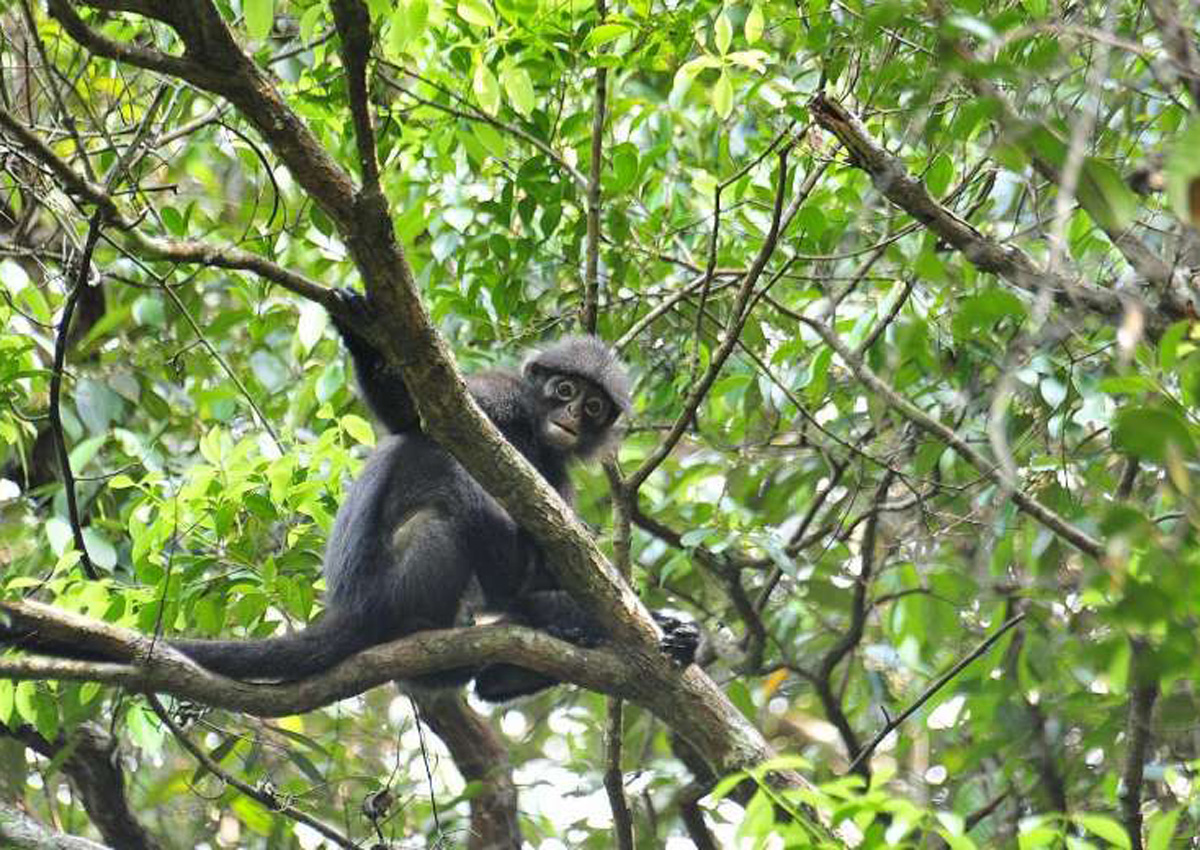The shy, gentle banded leaf monkey may be able to claw its way back from the brink of extinction here, with some help from the experts.
The authorities are expanding the primates’ living quarters, and studying their behaviour and population, in an effort to boost their numbers. One of two monkey species native to Singapore, these creatures are critically endangered, with at most 60 of the black and white leaf-eaters left. Unlike their gregarious cousins – the long-tailed macaques – they stay hidden deep in Singapore’s forests, away from people and human homes.
Part of the effort to save them involves habitat expansion, said the National Parks Board (NParks).
“The provision of additional forested habitats, in the form of new nature parks, would help to sustain and possibly increase the population of banded leaf monkeys,” Dr Lena Chan, director of NParks’ National Biodiversity Centre, said.
One such park, the upcoming Thomson Nature Park next to Lower Peirce Reservoir in the Central Catchment Nature Reserve, is especially important, said Ms Andie Ang, 30, who studies banded leaf monkeys and is a member of the primate specialist group of the International Union for Conservation of Nature.
It lies within the area where these monkeys forage for food, so reforestation will enhance their existing habitat, explained Ms Ang, who is pursuing a PhD in biological anthropology at the University of Colorado, Boulder, in the United States.
“The monkeys are now restricted to the Central Catchment Nature Reserve and could easily be wiped out in the event of a fire or a disease outbreak,” she pointed out.
In addition to habitat enhancement, which includes planting trees that provide food for the monkeys, it is also vital to ensure that forest fragments separated by roads are reconnected, she stressed.
Forest canopy connectivity, especially above the Old Upper Thomson Road next to the Thomson Nature Park, will be crucial for the dispersal of the monkeys into nearby forest patches, said Ms Ang.
Thomson Nature Park is one of four announced by NParks in February last year. The others are Chestnut, Windsor and Springleaf nature parks.
Springleaf and Chestnut parks are already open to the public, and Windsor is expected to open later this year. There is no timeline yet for the Thomson park.
Ms Ang said: “It is wonderful to hear about the nature parks. They will not only protect the biodiversity but also bring people closer to nature.”
However, she cautioned that the parks must be well designed so a balance can be struck between public accessibility and nature protection.
Dr Chan added that NParks will also work with stakeholders in developing ecological studies to guide the development of long-term management strategies for the banded leaf monkeys.
There is reason to be optimistic, and NParks has already successfully championed several other disappearing species.
The tiger orchid, which went extinct here in the wild, is one such example. The world’s largest tree-growing orchid, it was re-introduced to the island in 1999 and can now be found along Holland Road and East Coast Park.

This article was first published on April 11, 2016.
Get a copy of The Straits Times or go to straitstimes.com for more stories.






